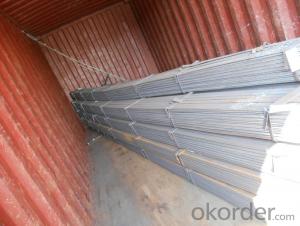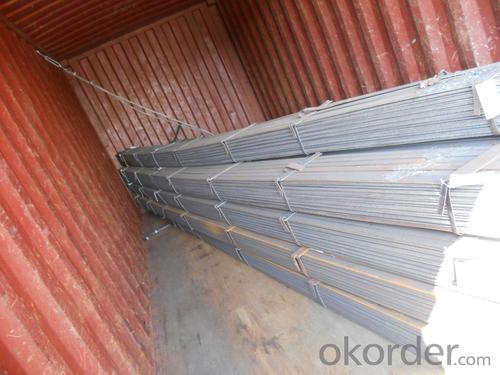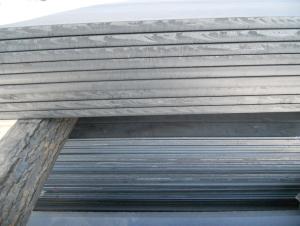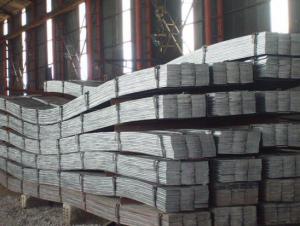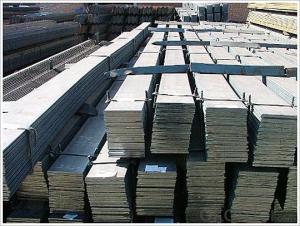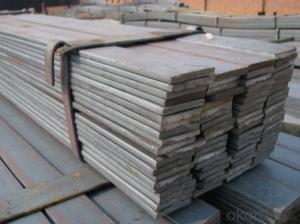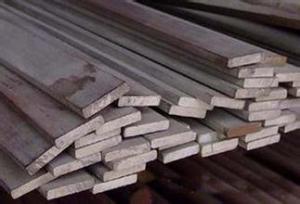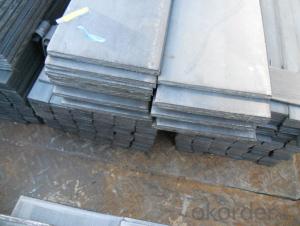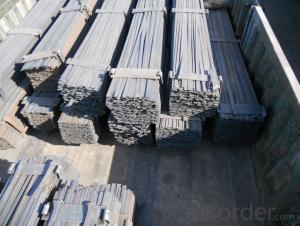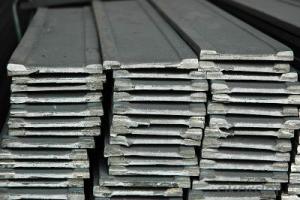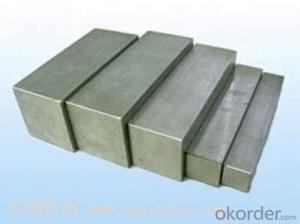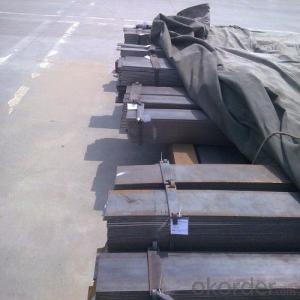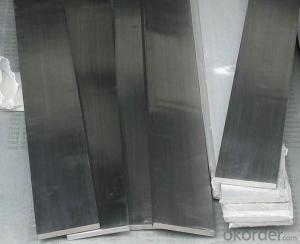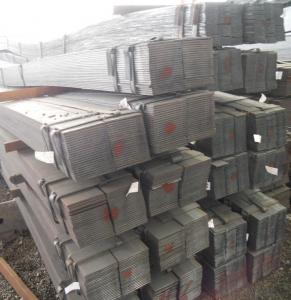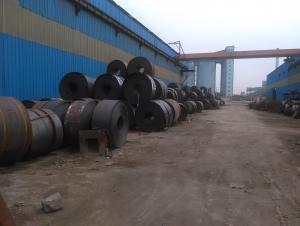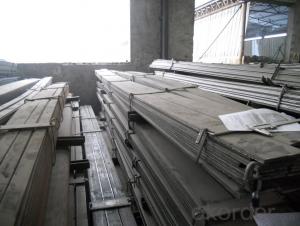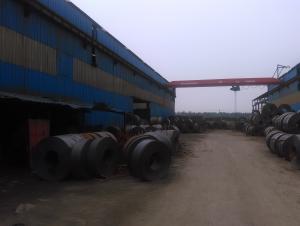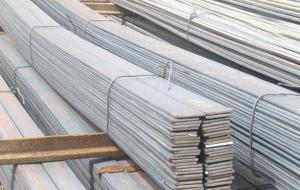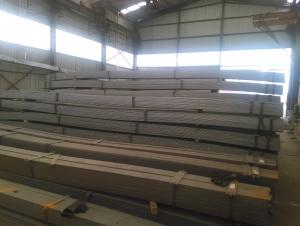Q235 Steel Flat Bar
- Loading Port:
- China Main Port
- Payment Terms:
- TT or LC
- Min Order Qty:
- -
- Supply Capability:
- -
OKorder Service Pledge
OKorder Financial Service
You Might Also Like
Product Description:
OKorder is offering Q235 Steel Flat Bar at great prices with worldwide shipping. Our supplier is a world-class manufacturer of steel, with our products utilized the world over. OKorder annually supplies products to European, North American and Asian markets. We provide quotations within 24 hours of receiving an inquiry and guarantee competitive prices.
Product Applications:
Q235 Steel Flat Bar are ideal for structural applications and are widely used in the construction of buildings and bridges, and the manufacturing, petrochemical, and transportation industries.
Product Advantages:
OKorder's Q235 Steel Flat Bar are durable, strong, and resist corrosion.
Main Product Features:
· Premium quality
· Prompt delivery & seaworthy packing (30 days after receiving deposit)
· Corrosion resistance
· Can be recycled and reused
· Mill test certification
· Professional Service
· Competitive pricing
Product Specifications:
Manufacture: Hot rolled
Grade: 235
Certificates: ISO, SGS, BV, CIQ
Length: 6m – 12m, as per customer request
Thickness: 3mm-30mm
Width:20mm-200mm
Packaging: Export packing, nude packing, bundled
Chemical composition of Q235
Alloy No | Grade | Element(%) | ||||
C
| Mn
| S
| P
| Si
| ||
Q235
|
B
|
0.12—0.20 |
0.3—0.7 |
≤0.045 |
≤0.045
|
≤0.3
|
Physical properties of Q235
Alloy No | Grade | Yielding strength point(Mpa) | Tensile strength (Mpa) | Elongation after fracture(%) | ||||||
Thickness (mm) | Thickness (mm) | |||||||||
≤16 | >16--40 | >40--60 | >60--100 | ≤16 | >16--40 | >40--60 | >60--100 | |||
≥ | ≥ | |||||||||
Q235 |
B |
235 |
225 |
215 |
205 |
375--500 |
26 |
25 |
24 |
23 |
Usage/Applications of Q235 Steel Flat Bar
Widely used for construction, Machinery manufacturing, Iron tower steel structure, Shipbuilding; Steel grating, Staircase, Bridge, Viaduct, Railway spare parts, Boilers making etc.
FAQ:
Q1: Why buy Materials & Equipment from OKorder.com?
A1: All products offered byOKorder.com are carefully selected from China's most reliable manufacturing enterprises. Through its ISO certifications, OKorder.com adheres to the highest standards and a commitment to supply chain safety and customer satisfaction.
Q2: How do we guarantee the quality of our products?
A2: We have established an advanced quality management system which conducts strict quality tests at every step, from raw materials to the final product. At the same time, we provide extensive follow-up service assurances as required.
Q3: How soon can we receive the product after purchase?
A3: Within three days of placing an order, we will begin production. The specific shipping date is dependent upon international and government factors, but is typically 7 to 10 workdays.
Images:
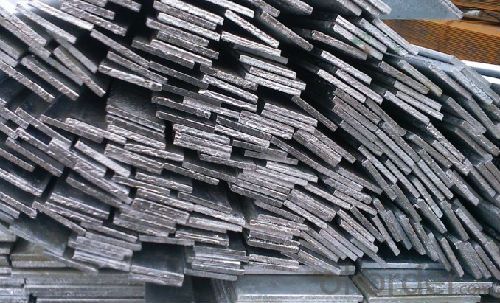
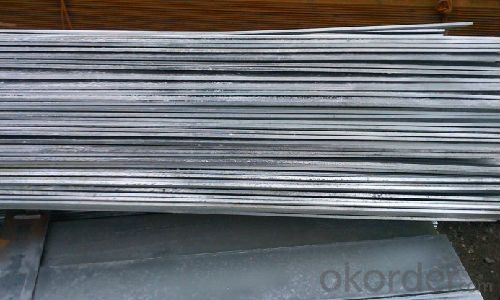
- Q: Are steel flat bars commonly used in the shipbuilding industry?
- Yes, steel flat bars are commonly used in the shipbuilding industry. They are often used for various structural components such as frames, bulkheads, and stiffeners due to their strength, durability, and versatility.
- Q: Can steel flat bars be used for making fencing?
- Yes, steel flat bars can be used for making fencing. They are commonly used in fencing projects due to their durability, strength, and resistance to wear and tear. Steel flat bars provide a sturdy framework for fences and can be easily welded or bolted together to create a secure barrier.
- Q: The total floor distribution along the wall surface 40x4 galvanized flat steel, flat paint is painted yellow mark or brush a straight chute
- Fire retardant anti-corrosion coating, waterproof and anti-corrosion, and insulation effect is good, can be painted on any material, anti high temperature insulation shielding current through, corona discharge point phenomenon. Good insulation is the most basic and reliable means to ensure the safe operation of electrical equipment and lines, and to prevent the occurrence of electric shock accidents. As for what brush Road, this seems to have no mandatory requirements. Hope to adopt!
- Q: How do you prevent twisting of steel flat bars during welding?
- To prevent twisting of steel flat bars during welding, it is essential to properly clamp and secure the bars in place. This can be achieved by using strong and sturdy clamps or fixtures, ensuring that the bars are held tightly and aligned correctly. Additionally, evenly distributing the heat during welding and using proper welding techniques can help minimize the chances of twisting.
- Q: Can steel flat bars be used for manufacturing appliances?
- Yes, steel flat bars can be used for manufacturing appliances as they provide strength, durability, and versatility in various applications.
- Q: Building poles, outdoor flat steel, the deeper the buried depth, the better?
- Building poles, outdoor flat steel, buried depth is not as deep as possible. According to the standard requirements, the level of the embedded depth is not less than 0.6 meters.
- Q: Are steel flat bars prone to rusting?
- Yes, steel flat bars are prone to rusting as they are made of iron which reacts with oxygen and moisture in the air, leading to the formation of iron oxide or rust.
- Q: Can steel flat bars be used in automotive applications?
- Yes, steel flat bars can be used in automotive applications. Steel flat bars are known for their strength, durability, and versatility, making them suitable for various automotive components and structures. They can be used in the construction of chassis frames, body panels, suspension components, and even in the fabrication of custom parts. The high tensile strength of steel flat bars allows them to withstand the significant forces and loads experienced by automotive parts during operation. Additionally, steel flat bars can be easily shaped, welded, and formed to meet the specific design requirements of automotive applications. Overall, the use of steel flat bars in automotive applications is common and widely accepted due to their excellent mechanical properties and cost-effectiveness.
- Q: How do steel flat bars compare to granite flat bars?
- Steel flat bars and granite flat bars have several differences that should be considered when comparing them. Firstly, steel flat bars are made from a durable and strong material, which makes them highly resistant to bending and breaking. Granite, on the other hand, is a natural stone that is known for its strength and durability. However, it is not as strong as steel and may crack or chip under heavy loads or impacts. Secondly, steel flat bars are more versatile in terms of their applications. They can be easily cut, welded, and shaped to fit specific requirements. Steel flat bars are commonly used in construction, manufacturing, and fabrication industries due to their malleability. Granite flat bars, on the other hand, are primarily used in the construction and design of countertops, flooring, and other architectural elements. Another important factor to consider is the aesthetic appeal. Steel flat bars have a sleek and industrial look, which makes them suitable for contemporary designs. Granite flat bars, on the other hand, have a natural and timeless beauty. They are available in various colors and patterns, making them a popular choice for adding elegance and sophistication to interior and exterior spaces. In terms of maintenance, steel flat bars require regular cleaning and occasional rust prevention measures to maintain their appearance and prevent corrosion. Granite flat bars, on the other hand, are relatively low maintenance. They are naturally resistant to stains, scratches, and heat, making them easy to clean and maintain. Lastly, the cost is an important consideration. Steel flat bars are generally more affordable than granite flat bars. While the price of granite varies depending on the quality and availability, it is generally more expensive than steel due to its natural sourcing and fabrication process. In summary, steel flat bars and granite flat bars have different strengths and weaknesses. Steel offers durability, versatility, and affordability, making it suitable for various applications. Granite, on the other hand, provides natural beauty, strength, and low maintenance, making it an excellent choice for adding elegance to architectural designs. Ultimately, the choice between steel and granite flat bars depends on the specific requirements, budget, and desired aesthetic of the project.
- Q: Can steel flat bars be used in high-temperature environments?
- Yes, steel flat bars can be used in high-temperature environments, but the specific type of steel used will determine its suitability. Stainless steel flat bars, for example, are often used in high-temperature applications due to their ability to resist corrosion and maintain their strength at elevated temperatures. Certain grades of stainless steel, such as 304 and 316, can withstand temperatures up to 870°C (1600°F) and 925°C (1700°F), respectively. Additionally, heat-resistant alloys like Inconel and Hastelloy are commonly used for high-temperature applications as they can maintain their mechanical properties even at extremely high temperatures. However, it is important to consider the specific temperature range, duration of exposure, and the potential for other factors like oxidizing or reducing atmospheres that may affect the performance of steel flat bars in high-temperature environments. Therefore, it is crucial to consult with materials engineers or experts to determine the best steel flat bar for a specific high-temperature application.
Send your message to us
Q235 Steel Flat Bar
- Loading Port:
- China Main Port
- Payment Terms:
- TT or LC
- Min Order Qty:
- -
- Supply Capability:
- -
OKorder Service Pledge
OKorder Financial Service
Similar products
Hot products
Hot Searches
Related keywords
